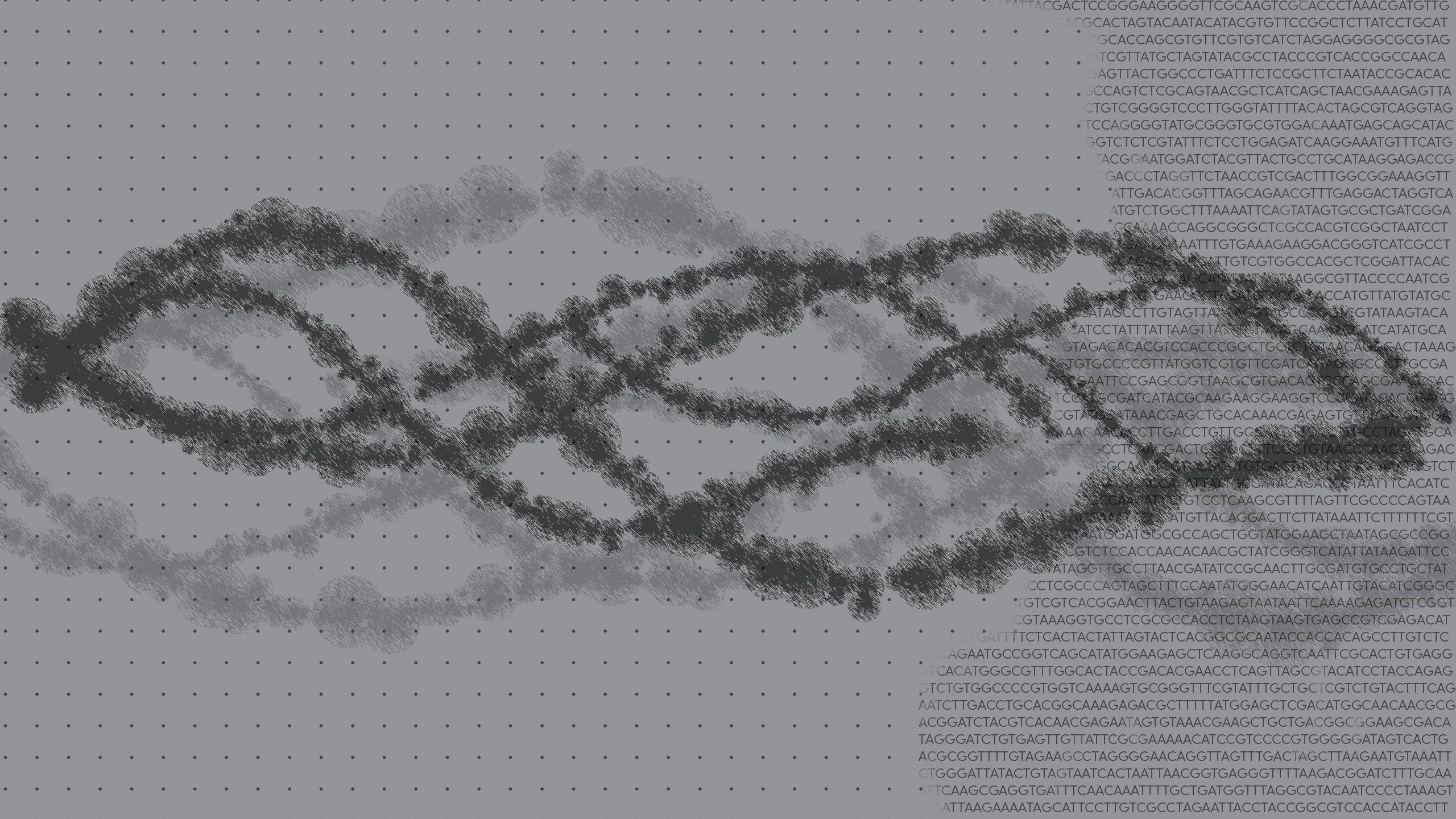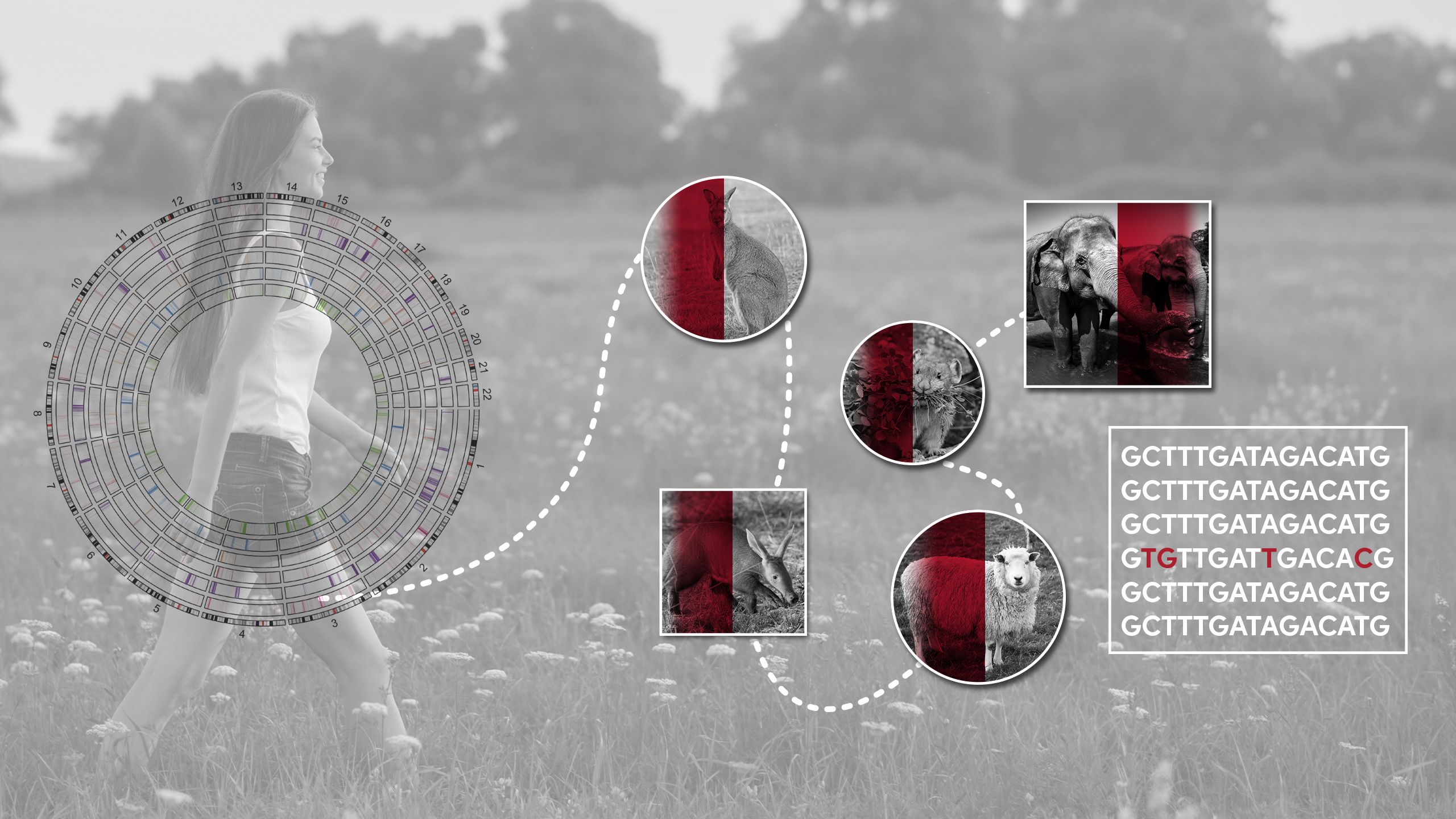PIONEERING THE FUTURE
Stories of Discovery & Innovation
at University of Utah Health

Discovering DNA Secrets
April 15, 2021
In the era of big data, researchers have access to vast amounts of genetic information. The challenge has become how to make sense of it all. Scientists at University of Utah Health are using creative approaches to glean new knowledge about human health from the genome sequences of humans and other animals. Their studies are uncovering fundamental insights about how our genes are regulated and how they change, revealing origins of disease, and pointing scientists toward novel therapeutic strategies.
Advances in DNA sequencing technology have made it possible for researchers to analyze and compare entire genomes, but a genome sequence represents only a moment in time. Genomes are not static: changes accumulate over a lifetime due to sun exposure, chemical damage, and errors in DNA replication. Some bits of DNA even move around the genome on their own.
Geneticist Lynn Jorde, PhD, and colleagues compared family members’ DNA sequences across generations to estimate the rate at which some of these changes occur and how quickly mutations accumulate in the human genome. They discovered that mobile elements called jumping genes, which make up about half of the human genome, have hopped to a new location in about five percent of live births. These rearrangements are sometimes harmless, but can also disrupt gene function and cause disease. With Richard Cawthon, MD, PhD, they’ve also found that a slower rate of mutation within families correlates with longer lifespan. Their findings suggest that it may be possible to slow the aging process by restoring the DNA repair mechanisms that naturally become less efficient as we get older.
Learn more about this discovery.
While our DNA is constantly shuffling, mutating, and evolving, some segments of the human genome are remarkably resistant to change. These invariable regions, where almost everyone’s DNA sequence is the same, are thought to be some of our genome’s most essential elements—so critical that any changes would have devastating consequences. Zeroing in on these segments can help researchers identify genes in which mutations cause serious disease.
Geneticist Aaron Quinlan, PhD, has mapped these constrained regions of the genome by comparing DNA sequences from more than 120,000 individuals, focusing on the portion of the genome that encodes proteins. With this massive dataset, Quinlan and his team were able to identify gene segments that appear to be particularly sensitive to change, even if variation is tolerated elsewhere in the same gene. They suspect that mutations in these regions may cause severe developmental disorders. Many of the constrained regions they found are in genes that have not previously been linked to disease and could offer researchers important clues into unexplained disorders.
Genetics of Polycystic Ovary Syndrome

Large genetic analyses are also helping researchers understand complex conditions such as polycystic ovary syndrome (PCOS), a hormonal disorder that disrupts menstrual cycles and arrests egg development. Women with PCOS have variable symptoms: Many develop acne and excess facial hair, and weight gain, type 2 diabetes, and depression are also common. The exact cause of the disorder, which affects about one of every ten women in their reproductive years, is unknown and the criteria that medical providers use to diagnose it are inconsistent, which can be frustrating for patients seeking to understand their symptoms.
A study led by Division of Endocrinology Chief Corrine Welt, MD, suggests that cases of PCOS share the same genetic origins regardless of which symptoms have been used to diagnose them. After analyzing the genomes of more than 10,000 women, Welt and her team identified 14 gene variants associated with PCOS, including three that had not previously been linked to the disorder. Some of the variants affect genetic pathways also implicated in depression, type 2 diabetes and obesity. Understanding the genetic risk factors for PCOS could help physicians diagnosis the disorder earlier and better manage its potential complications.
The genetic factors that influence disease risk are not exclusively in our genes. Scattered throughout our genome are regulatory elements that influence when, where, and how much our genes are used. To find ways these regulatory elements can help stave off disease, Christopher Gregg, PhD, Elliot Ferris, PhD, and colleagues look to the genomes of animals with biomedical superpowers.
They have scoured the DNA of elephants, which rarely get cancer despite their large size and numerous cells; hibernating bats and squirrels, which pack on weight in preparation for a sedentary winter, yet don’t become obese or develop metabolic problems; and other mammals whose lifestyles would be harmful in human. By comparing these species’ genomes to those of other mammals and looking for areas that appear to have undergone accelerated evolution, Gregg’s team has assembled an atlas of regulatory elements linked to clinically important traits, including regulators of obesity, metabolism, aging, and cancer resistance. Their findings point researchers toward potential targets for preventing or treating human disease.




